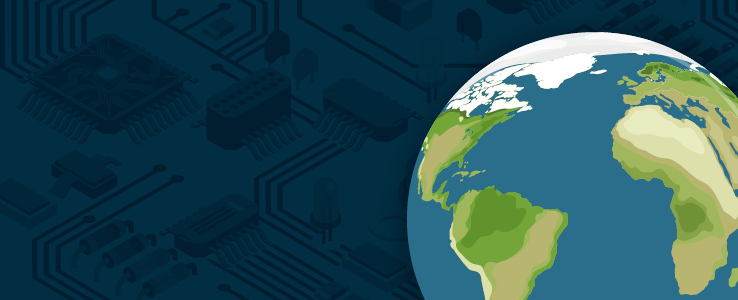In today's rapidly changing digital landscape, traditional perimeter-based security measures such as firewalls and VPNs are no longer sufficient to protect against sophisticated cyber threats. As organizations increasingly adopt cloud computing, remote work, and Internet of Things (IoT) devices, Zero Trust Architecture (ZTA) is emerging as an essential cybersecurity model. Zero Trust operates on the principle that no user or device should be trusted by default, whether they are inside or outside the network.
Every access request must be continuously verified before it is granted. Zero Trust focuses on strict identity verification, continuous monitoring, and segmentation of networks into smaller isolated zones, known as microsegmentation. This approach ensures that even if a breach occurs, attackers cannot easily move laterally across the network.

In light of increasing cyberattacks, including data breaches, ransomware, and phishing, Zero Trust has become a critical strategy for enhancing an organization’s security posture. Zero Trust deployment has numerous expert views, and one of those who really delves into this within an extensive field is Chetan Sasidhar Ravi. Through his contribution, he poses how microsegmentation plays a critical role in attaining Zero Trust-compliant environments.
Other researchers accompany Ravi in their contributions, with interests broadening into threat detection, cloud security, and linking the existing advanced technologies such as AI into Zero Trust. In "Beyond the Firewall: Implementing Zero Trust with Network Microsegmentation", Chetan Sasidhar Ravi outlines traditional security architecture limits and proposes microsegmentation as one solution for developing new solutions to current network security issues. Here, protection does not depend on firewalls guarding a whole network.
It proposes breaking it into small segments, each requiring some form of authorization before access is given. This makes it much harder for attackers to move across the network once they access one segment. Ravi's study focuses on how the security environment forces organizations to rethink the means by which they secure their networks in today's realities.
Microsegmentation creates isolated zones, making it even harder for attackers to take advantage of vulnerabilities in a network. Through Zero Trust tenets, Ravi thinks that businesses will be able to permit only the authorized users and devices to sensitive resources even when compromised. In addition to Ravi’s work on microsegmentation, another expert brings attention to the use of advanced threat detection methods.
This research focuses on integrating Zero Trust with machine learning and artificial intelligence (AI) to improve security monitoring and incident response. With AI-driven solutions, organizations can identify anomalies in real-time, allowing them to respond quickly to potential threats and minimize the impact of a security breach. The integration of AI further strengthens the Zero Trust model by providing more proactive protection against emerging threats.
Another key contribution to the Zero Trust conversation comes from research on scaling Zero Trust for hybrid and cloud environments. As more businesses move to the cloud, maintaining consistent security across both on-premise and cloud systems becomes increasingly complex. The research emphasizes the need for strong identity and access management (IAM) solutions that apply Zero Trust principles uniformly across all systems.
This approach ensures that security policies are consistently enforced, whether data is stored on-premise or in the cloud. Organizations that have large enterprises and diverse infrastructure have to adopt Zero Trust. Applying Zero Trust principles not only reduces the business attack surface but also mitigates various cyber threats.
In fact, it brings a change from a reactive security paradigm in which action is taken after an incident and the disturbance caused by that incident, to that of continually keeping verification of a user, device and application prior to allowing access. It is through the consolidated work by these experts that Zero Trust comes out to be more than just a theoretical concept, but indeed, an approach to cybersecurity that is a must for today’s IT environments. Whether it is with microsegmentation on an internal network, AI-driven detections of threats, or through uniformly applied security across hybrid infrastructures, Zero Trust is a comprehensive answer towards protecting sensitive data and systems.
The Zero Trust model addresses precisely such types of challenges posed by today's cybersecurity environment, thus making it a trusted best strategy for organizations to secure their networks and counter emerging threats..
















